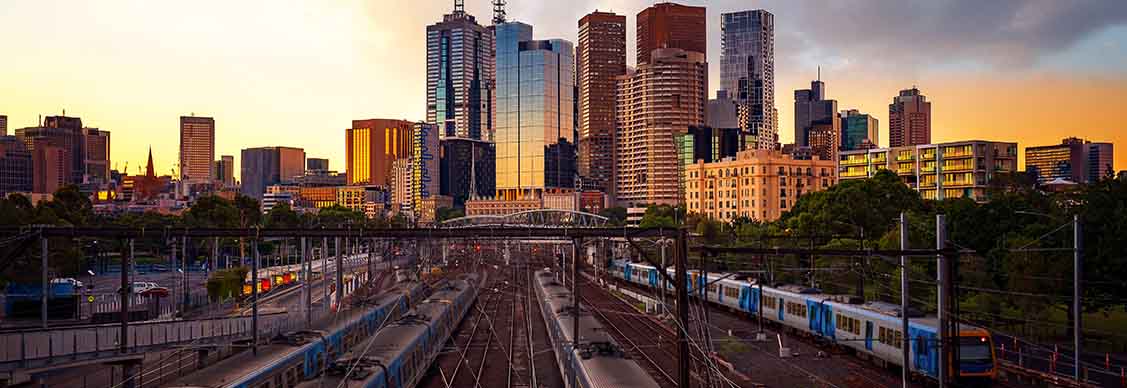The Melbourne location driving rental growth as offices recover
A corner of Melbourne’s CBD is ticking boxes for discerning tenants.
There’s increasing evidence of recovery in Melbourne’s office market and it starts in Collins Street.
The well-known stretch which forms part of Melbourne’s eastern core contains six of the eight buildings (16% of Melbourne’s prime CBD offices) in the city’s CBD that have achieved effective rental growth over the 12 months, JLL has found.
This growth, in a precinct that is considered rich in amenity, well-connected, and contains a significant agglomeration of professional services companies, investment banks, major corporations and government entities, demonstrates how businesses are prepared to pay more for a premium location as part of their return-to-office strategies.
These assets are recording effective rental growth – a value that is broadly still declining in other parts of Melbourne.
"From an investment perspective this illustrates that core assets in core locations are less exposed to downside risk through the cycle and are quicker to recover,” says Annabel McFarlane, head of strategic research, JLL and head author of the paper The Real Melbourne Narrative.
Among the eastern core buildings serving up amenity such as café and dining options, shared workspaces and top-tier sustainability are 101 Collins. With its refurbished lobby, heritage architecture and full electrification, it is an address so prestigious it has its own tram stop. The building counts financial heavyweights Goldman Sachs, Lazard, and Rothschild among its tenants.
Another, 120 Collins Street, also recently refurbished, has secured Corrs as a tenant, one of several law firms relocating into this part of town.
A revamp currently underway of the A-grade building at 55 Collins Street, part of Collins Place, is also serving it well. The building has had a strong level of leasing activity from a range of groups as it offers part, whole, and multi-floor opportunities in the best part of town.
“Collins Street has high-end retail, dining of all types, bars, coffee shops and other lifestyle drawcards that answer the call for connectivity within and around buildings,” McFarlane says.
Looking for more insights? Never miss an update.
The latest news, insights and opportunities from global commercial real estate markets straight to your inbox.
Beyond vacancy
Vacancy rates in Melbourne’s CBD are at 19.8% as of 3Q24, the highest recorded since 1995. Analysts expect vacancy to remain elevated over the next 18 months before contracting gradually from 2026.
But the JLL report, The Real Melbourne Narrative, urges investors to look beyond headline figures.
Melbourne has added 584,100 square metres of office space since 2020 – a 12.2% increase in CBD stock. No other Australian city has had to absorb this level of supply through the pandemic.
While this might mean tenants seeking offices are flooded with options, not all of them meet the standards corporates are now demanding to satisfy employees and shareholders.
Of all of Melbourne’s high quality office buildings in the CBD, 55 of them can accommodate a 5,000 sqm tenant requirement. However, just 10 of those have a top-tier Green Star sustainability rating of 5.5 or 6 stars but only two of these are located in the eastern parliament, eastern core and civic precincts, where businesses are likely to look.
Investment Opportunities
Proactive landlords rewarded
A broader market recovery is on the horizon and likely to support further rental growth, JLL research indicates.
Population and GDP growth are a key driver of occupier demand for most real estate types, and Melbourne has one of the strongest combined projections of any city in a global top 15 economy. Analysts say this offsets the weaker post-pandemic demand for offices.
In addition, greater Melbourne’s population is expected to increase by over half a million people over the next five years and become Australia’s largest city later this decade. JLL calculates this influx of people could create 550,000 sqm of demand for offices.
Even so, the demand will continue to be for high quality commercial space. Some buildings are at risk of structural vacancies, unable to attract tenants even at very low rents.
“There is increasing rhetoric around a strong return to work push from corporates which is expected to play out over the coming year or two, resulting in a greater focus on workplace quality to attract and retain the best employees,” says Nick Drake, JLL’s joint head of office leasing in Victoria.
“Landlords, whether they own premium or lower grade buildings, who are proactive about improving the amenity and quality of their buildings, are still seeing tenant interest,” Drake adds. “It's those buildings that haven’t been modernised that will continue to see high levels of vacancy.”
Most corporate tenants in Melbourne, both local and global, have carbon net zero or interim net zero targets set for January 1, 2030. Six out of 11 current requirements in the market for more than 5,000 sqm mention ‘high sustainability’.
But prime location and amenity remain the key priorities for tenants.
“When people are looking at buildings that meet premium location and amenity requirements, such as a Collins St location, they are happy to then look at sustainability as a work in progress,” McFarlane says. “In cases that don’t currently meet their requirements, they are happy to instead put their confidence in the intent and ability of landlords to work with them as a partner in achieving the necessary sustainability upgrades over time.”
Contact Nick Drake
Joint head of office leasing, Victoria, JLLWhat’s your investment ambition?
Uncover opportunities and capital sources all over the world and discover how we can help you achieve your investment goals.




